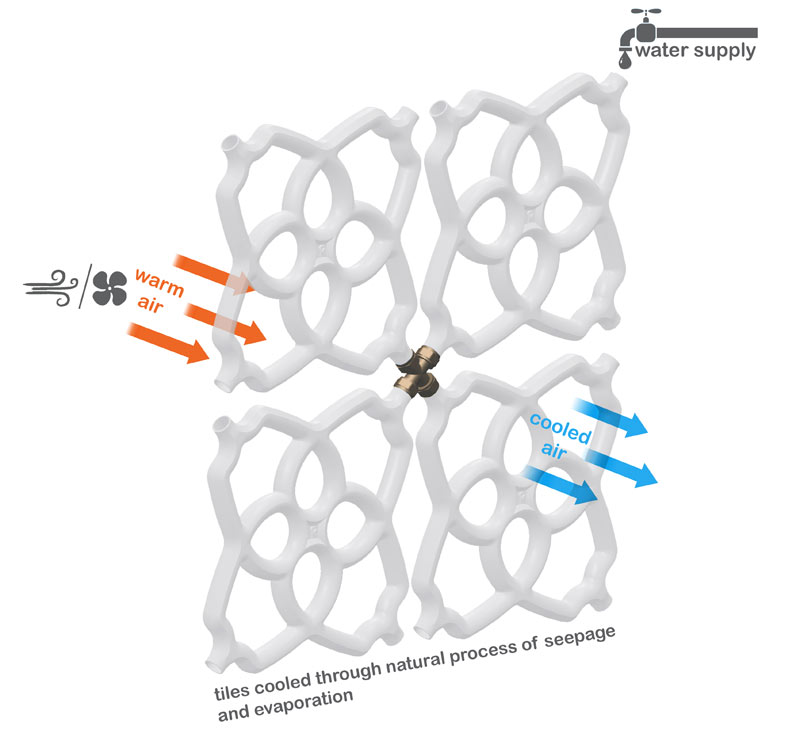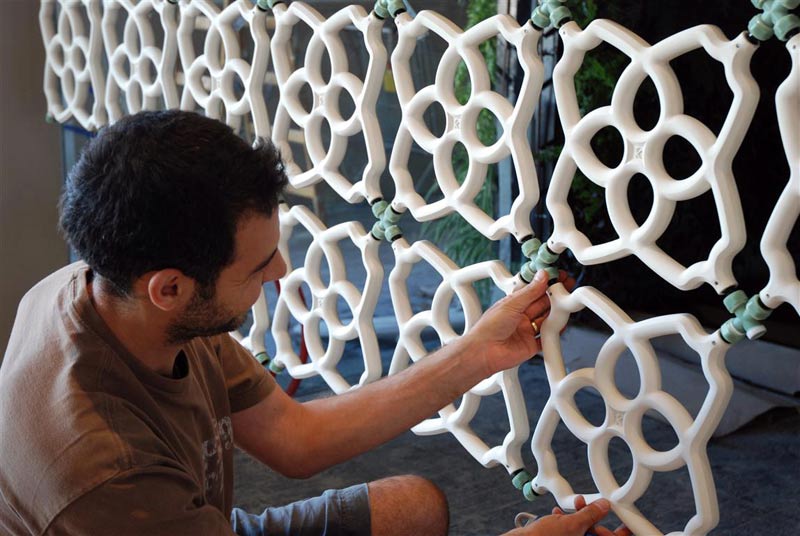
Cooling via evaporation is the same system used by the human body to cool body temperatures. When we perspire and air comes in contact with our bodies, some of the perspiration evaporates. This evaporation process turns the perspiration from a fluid into steam (gas) which consumes energy (heat). This heat is removed from our skin and we enjoy a sense of cooling.
A similar process takes place with the Ecooler system. The moist surfaces of the tiles represent our body skin, the water represents perspiration, and the screen allows the wind to pass through it. The evaporation process cools the water, thus reducing its temperature and evaporating the moisture. Afterwards, the cold air is sent through and out into the space, replacing the hot air. The speed of the wind will increase the supply of coolness to the space.
How much water is required?
The drying times or emptying of the Ecooler are influenced by air temperature, quantity of humidity in the air, and wind speed. We can control the drying times via the type of clay and the kiln's firing temperature. Each tile contains approximately 550 ml of water, and on average, about half of this is emptied per day. For example, in a system of 35 tiles, you will have a capacity for 19 liters of water. Filling the wall at the end of the day will consume approximately 9.5 liters of water – this is almost the same amount of water used when flushing your toilet once.
The module
Each tile is 33 x 33 cm and 2.7 cm deep. The modular structure enables great flexibility, and the user can create a wall at whatever size he wishes by fitting together the tiles are desired. The connection is simple and convenient for both assembly and disassembly and enables one to add or remove tiles as needed, without disassembling the entire wall.
Two options for implementation – with an automatic filling system via modern water pipes, or manual filling.

The implementation is simple and suitable for any project. The tiles are modular to create a partition in any size. The connectors allow disconnection or assembly of tiles as necessary without dismantling the entire wall.

The table below illustrates the cooling abilities of the water evaporation system in various environmental conditions, with two variables – temperature and level of humidity in the surroundings. A radical example would be when the air temperature is 40°C and the humidity percentage is particularly low – 20% - in this case, the system can cool its surroundings by approximately 17°C.
Outside temperature | Relative humidity of surroundings | ||||||||
| 20% | 25% | 30% | 35% | 40% | 45% | 50% | 55% | 60% |
Temperature in °C following cooling | |||||||||
30 | 16.4 | 17.3 | 17.9 | 18.8 | 19.8 | 20.5 | 22.4 | 22.2 | 22.9 |
35 | 19.8 | 20.4 | 21.7 | 22.8 | 23.8 | 24.8 | 25.7 | 26.5 | 27.5 |
40 | 23.4 | 24.1 | 25.4 | 26.7 | 27.8 | 29.0 | 29.0 | 30.9 | 31.9 |